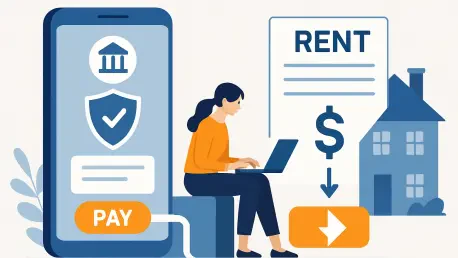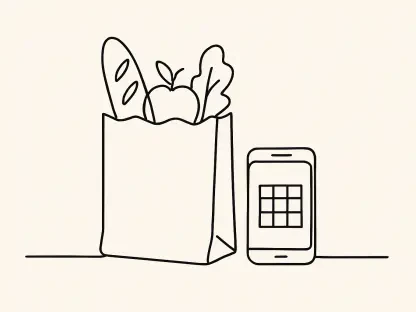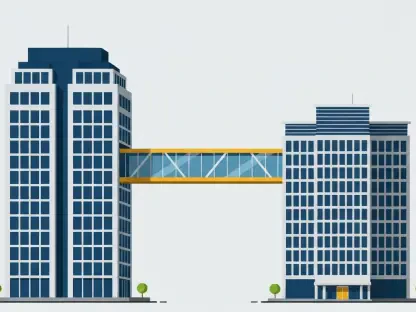I’m thrilled to sit down with Priya Jaiswal, a renowned expert in banking, business, and finance, whose deep knowledge of market trends and innovative financial solutions offers a unique perspective on the evolving landscape of payment technologies. Today, we’re diving into the groundbreaking partnership between a leading payment solutions provider and a prominent housing group, exploring how Open Banking is transforming rent payments. Our conversation touches on the strategic importance of this collaboration, the benefits of cutting-edge payment tools, and the broader impact on digital transformation in the housing sector. Let’s get started.
How did this partnership between a major payment solutions provider and a housing group come about, and what were the initial goals when it kicked off in mid-2024?
This partnership was born out of a shared vision to modernize payment systems within the housing sector. It started in June 2024 with the aim of giving customers more control over their finances through simpler, more accessible payment options. The focus was on streamlining rent payments while reducing operational complexities for the housing group. Both parties saw an opportunity to leverage technology to enhance customer experience, and that’s where the journey began.
What makes Open Banking such a game-changer in this collaboration, and why is it being hailed as a pioneering step for the housing industry?
Open Banking is revolutionary because it allows direct, secure transactions between a customer’s bank account and the service provider, bypassing traditional intermediaries like card networks. It’s faster because payments are processed almost instantly, and safer due to robust authentication protocols. For the housing sector, this is a pioneering move because it introduces a level of efficiency and security that wasn’t previously widespread in rent collection. It’s setting a new standard for how payments can be handled in this space.
Can you break down how Open Banking enhances convenience for residents when it comes to paying rent?
Absolutely. With Open Banking, residents can authorize payments directly from their bank accounts without entering card details or dealing with lengthy processes. It’s as simple as a few clicks on a mobile device, often through a dedicated app or link. This eliminates the hassle of remembering card numbers or worrying about expired cards, making the process seamless and user-friendly for tenants of all tech-savviness levels.
One of the reported benefits is cost savings on transactions. How does Open Banking help reduce expenses for the housing group compared to traditional payment methods?
Open Banking cuts costs by avoiding the fees associated with card-processing networks. Every time a payment is made via credit or debit card, there are merchant fees and other charges that add up quickly for large organizations. By facilitating direct bank-to-bank transactions, Open Banking sidesteps these expenses, allowing the housing group to save significantly on operational costs, which can then be reinvested into better services for residents.
Let’s talk about some of the specific tools rolled out in the first year of this partnership. How does the PayByLink feature work, and what has been the feedback from users?
PayByLink is a fantastic tool that allows staff to send personalized payment request links directly to customers via SMS. These links are pre-populated with the necessary details, so all the customer needs to do is click and confirm the payment. It’s incredibly straightforward and reduces errors. The feedback has been overwhelmingly positive—customers appreciate the simplicity and speed, and it’s become a popular option for many.
Another innovation was the introduction of a dedicated payments app. What are some of the key features that make rent payments easier for customers through this platform?
The app is designed with user convenience at its core. It allows customers to make payments directly from their devices at any time, view their payment history, and set up reminders for upcoming due dates. It also integrates seamlessly with Open Banking for secure transactions. Essentially, it puts control in the hands of the customer, letting them manage their rent payments without needing to call or visit an office.
The app also supports barcode generation for payments at physical stores. How does this feature improve on the older system of plastic rent cards?
Barcode generation is a smart upgrade from plastic rent cards. Instead of carrying around a physical card that can be lost or damaged, customers can generate a barcode on their app and scan it at thousands of participating stores to make payments. It’s more convenient for users and cuts down on the administrative burden and costs for the housing group, who no longer need to produce and replace physical cards. It’s a win-win.
From a strategic standpoint, why is expanding Open Banking into the housing sector considered a significant milestone for the payment solutions provider?
This expansion showcases the versatility of Open Banking technology and its ability to adapt to different industries. For the payment solutions provider, it’s a landmark achievement because it demonstrates their leadership in driving digital innovation beyond traditional retail or banking sectors. It aligns with their mission to transform service delivery through technology, opening doors to new markets and reinforcing their role as a key player in digital transformation.
Residents are reportedly experiencing a smoother and more secure payment process with Open Banking. Can you elaborate on the specific improvements they’re noticing?
Residents are seeing a noticeable difference in how effortless and secure their payments have become. With Open Banking, there’s no need to share sensitive card information, which reduces the risk of fraud. Payments are also processed faster, so there’s less worry about delays or late fees. Additionally, the integration with mobile apps and links means they can pay anytime, anywhere, which fits into their busy lives much better than older methods.
Looking ahead, what is your forecast for the future of Open Banking in the housing sector and other industries?
I’m incredibly optimistic about Open Banking’s potential. In the housing sector, I expect it to become the standard for rent payments over the next few years as more organizations recognize the cost savings and customer benefits. Beyond housing, I see it expanding into areas like utilities, subscriptions, and even government services, where secure, efficient transactions are critical. The technology is still evolving, but its ability to simplify payments while enhancing security positions it as a cornerstone of future financial systems.









